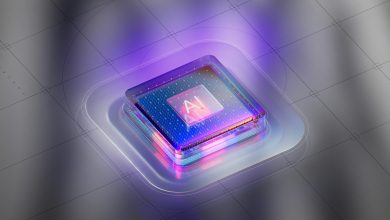Artificial intelligence represents a significant force for transformation across numerous sectors of the global economy. One area where its impact proves most profound is the complex world of energy management. The world faces immense pressure to optimize power consumption and transition toward sustainable sources.
AI offers a powerful set of tools to address these substantial challenges with precision and scale. This technology helps understand complex patterns, forecast future needs, and automate intricate control systems. From vast power grids to individual homes, AI’s influence reshapes energy production and use.
The role of AI in energy use and efficiency has a significant impact on grid optimization and predictive maintenance of vital equipment. AI enhances renewable energy, smart buildings, industrial operations, energy storage solutions, electric vehicle infrastructure, and future policy considerations. This brightens the path toward a more efficient, sustainable, and intelligent energy future.
AI for Smart Grid Management
Artificial intelligence algorithms analyze massive datasets from sensors across the electrical grid infrastructure. They identify patterns, predict potential failures, and automate responses to various network disruptions. These smart systems maintain grid stability and improve the overall reliability of our power supply.
AI makes real-time decisions to reroute power flows around congested areas. It adjusts voltage levels to minimize energy loss during the transmission and distribution process. This proactive management prevents widespread blackouts and ensures a consistent flow of electricity.
Predictive Maintenance in Power Plants
Power plants use AI to forecast equipment failures before they can actually happen. This technology constantly monitors the operational data from turbines, generators, and other components. It detects subtle anomalies that often precede a major mechanical or electrical system breakdown.
This predictive capability allows maintenance crews to perform repairs at the most opportune moment. It reduces unplanned downtime, extends the lifespan of expensive assets, and lowers repair costs. Power providers can now schedule service based on concrete data rather than fixed schedules.
Optimizing Renewable Energy Integration
AI helps seamlessly integrate variable renewable energy sources such as solar and wind power. It forecasts weather patterns and predicts the subsequent power output from these sources. This allows grid operators to better prepare for fluctuations in the renewable energy supply.
This is one of the main examples of the power of AI on energy systems and its effect on communities. It balances the grid when solar or wind generation drops or suddenly increases. The technology ensures a stable power supply even with a high mix of renewables.
AI-Powered Demand Response Programs
Demand response programs use AI to influence consumer energy use during peak hours. The systems communicate with smart appliances and thermostats in homes and also in businesses. They can automatically adjust settings to reduce electricity consumption when the grid is under low demand.
This helps utilities to avoid the use of expensive and less efficient Peaker plants. Consumers receive financial incentives for their participation in these important energy conservation programs. It creates a collaborative relationship between the utility provider and the end user of electricity.
Enhancing Energy Storage Systems
Artificial intelligence manages large-scale battery storage systems with remarkable precision and foresight. The algorithms determine the best times to charge batteries with low-cost excess power. They also decide when to discharge that stored energy back onto the electrical grid.
Learning about the rise of Tesla solar megapack batteries will demonstrate this principle perfectly. AI maximizes the economic value of these important and quite large energy storage assets. This supports grid stability and facilitates greater adoption of intermittent renewable energy resources.
Personalized Energy Savings for Consumers
AI provides homeowners with personalized recommendations for how to reduce their energy consumption. It analyzes their unique energy usage patterns from data collected with smart meters. The software identifies specific opportunities for efficiency improvements that save them more money.
These systems can suggest thermostat adjustments or appliance upgrades based on real household data. They empower consumers to take control of their electricity bills with actionable insights. This fosters a broader culture of energy conservation and promotes more sustainable household habits.
AI in Energy Trading and Forecasting
Energy traders use sophisticated AI models to forecast electricity prices and market demand. These algorithms process vast amounts of historical data, weather forecasts, and economic indicators. This gives traders a competitive edge in the complex and fast-paced energy markets.
The technology executes trades automatically based on predefined parameters and real-time market signals. It helps to optimize portfolio performance and mitigate the many financial risks involved. This leads to more efficient energy markets and stable prices for most end consumers.
Reducing Transmission and Distribution Losses
Utilities deploy AI to identify and locate energy losses within the distribution network. The technology analyzes sensor data to pinpoint areas with technical or non-technical losses. This allows for targeted interventions to fix inefficient lines or address power theft problems.
Minimizing these losses means more of the generated electricity reaches the intended customers. This improves the overall efficiency of the entire power delivery system from start to finish. It is a fundamental step toward building a far more sustainable energy infrastructure.
Autonomous Operation of Microgrids
The role of AI in energy use and efficiency enables the autonomous operation of microgrids and localized power generation grids. These systems can operate independently or connect to the main electrical power grid. AI manages local generation, storage, and demand to ensure a reliable power supply.
In the event of a main grid outage, the AI can seamlessly disconnect. It then continues to provide power to its local area without any noticeable interruption. This enhances energy resilience for critical facilities like hospitals, data centers, and military bases.
Streamlining Regulatory Compliance and Reporting
Energy companies use AI to automate complex regulatory compliance and reporting processes. The software tracks regulatory changes and ensures all operations remain fully compliant. It generates the required reports for government agencies with accuracy and efficiency.
This automation reduces staff administrative burden and minimizes the risk of penalties. It allows companies to focus their resources on core operations and strategic initiatives. The technology helps maintain transparent, accountable relationships with regulatory bodies worldwide.
Artificial intelligence has become an indispensable tool in the global energy sector. It drives efficiency, enhances reliability, and supports the transition to sustainable energy sources. From smart grid management to consumer savings, its impact is broad and deep.
As the technology continues to evolve, you can expect even greater innovations ahead. The future of energy is smarter, cleaner, and more efficient because of AI.




